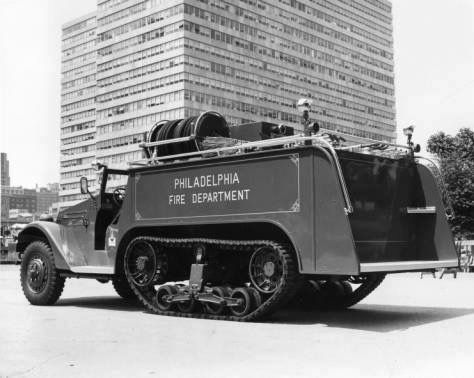Dark Alley Dan
CGN Ultra frequent flyer
- Location
- Darkest Edmonton
Looks like they weren't the only guys to see a need for a half-track fire truck...





As a mechanic I have wondered about trades and conscription or voluntary service for that matter.
If an aircraft tech joined the armed forces, would they assign him randomly or take his trade into account and put his skills to use after basic training?
It would take an army of mechanics to keep all that machinery running.
As a mechanic I have wondered about trades and conscription or voluntary service for that matter.
If an aircraft tech joined the armed forces, would they assign him randomly or take his trade into account and put his skills to use after basic training?
It would take an army of mechanics to keep all that machinery running.
Someone's in trouble...


Someone's in trouble...


looks pretty obvious to me
the back of the van is all pranged up too so the prop was running, look at the top of the door frame.
as for damage to the port wing, you only see the tip not the inboard part of the wing so the damage is likely further inboard.
the plane ran into the van.
There’s no way that engine was running when that collision occurred. Both tips would have been curled badly. Seen enough prop accidents to confirm that.looks pretty obvious to me
the back of the van is all pranged up too so the prop was running, look at the top of the door frame.
as for damage to the port wing, you only see the tip not the inboard part of the wing so the damage is likely further inboard.
the plane ran into the van.
There’s no way that engine was running when that collision occurred. Both tips would have been curled badly. Seen enough prop accidents to confirm that.
then what did the damage to the back door of the van ?
You’ve probably got the best explanation so far. If the prop was turning, it couldn’t be a above idle. Canopies being open kinda tells that they were occupied during the incident.However the collision occurred (probably a taxiing accident - student wasn't making his S-turns), the collision occurred at low power as evidenced by the only slightly FUBAR'd prop. Of course the -985 came to grief at the sudden stoppage when she nosed over. Mind you, back in those days -985's were a dime a dozen grab another and she's back in service in a few days.
remember forward visibility from a any tail dragger is poor, I sat in the BCAM Harvard today to check it out and the aeroplane obviously taxied into the van in the blind spot
Rockliffe eh sad to see the place todayFS965 (Taxied into a fuel tender at Rockcliffe on 15 October 1943. The aircraft was repaired)








































